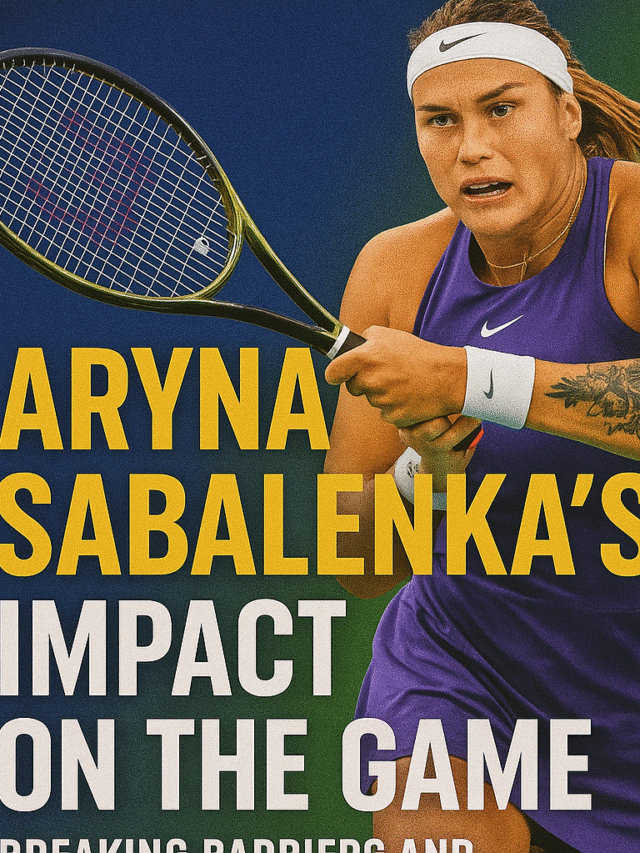south africa vs zimbabwe : Witnessing the Rivalry: My Firsthand Account of South Africa vs. Zimbabwe
The roar of the crowd was unlike anything I’d experienced before. It was electric, charged with anticipation and rich with emotion.
I stood at the edge of my seat, unable to look away as South Africa and Zimbabwe took to the field in front of a packed, modern stadium.
This wasn’t just a cricket match—it was a cultural clash, a tale of rivalry, pride, and unrelenting passion firmly rooted in the latest chapter of a storied history.
The stories and stats I had read about these two teams had prepared me academically, but nothing could have prepared me for the technological advances on display, the social media buzz surrounding the match, and, above all, the sheer intensity of what I witnessed firsthand in 2024.
From the very first crack of the bat to the final thrilling moments captured by hundreds of camera phones around me, this was a spectacle that surpassed anything I could have imagined. Allow me to take you through the highs and lows of one of the most unforgettable matches I’ve ever seen—and one that the world was watching live, thanks to dozens of streaming platforms and dedicated hashtags like #SAvsZim2024. south africa vs zimbabwe

The Road to Rivalry
To truly appreciate the depth of emotion tied to a South Africa vs. Zimbabwe cricket match, you need to understand the history, but also the very modern realities shaping this regional contest. Zimbabwe’s cricketing journey in the past decade has had its share of ups and downs, but the squad I saw had new energy, a reinvigorated spirit thanks to young talents fresh from their globally-followed domestic T20 league. South Africa, too, was fielding emerging superstars alongside its stalwarts, a blend that reflected a country equally eager to maintain its cricketing legacy and adapt to new styles of play.
Both teams came into this contest having made headlines—South Africa for dethroning Australia in a recent test series, Zimbabwe for pulling off a last-ball win against Bangladesh that went viral on TikTok and Instagram. This wasn’t just about bragging rights anymore; every fan in the stadium held a smartphone, recording, reacting, and joining a worldwide audience tracking every development, every wicket, and every six.
But here on the ground, among the fans wearing jerseys proudly emblazoned with their team’s colors—many posted their arrival at the stadium with the latest geo-tag filters—you realize this rivalry transcends sport itself. For Zimbabwe, the underdog tag isn’t just a descriptor; it’s a badge of honor, worn in defiance and hope. For South Africa, victory is non-negotiable, almost expected, putting pressure on every player. There’s no room for half-measures in this contest. south africa vs zimbabwe
Hype Before the Match
The days leading to the match had seen South Africa buzzing with anticipation. Billboards along highways flashed digital ads featuring Kagiso Rabada winding up for his trademark delivery, while Zimbabwean captain Craig Ervine’s face appeared in metro stations encouraging fans to “believe.” Ticket sales reached record highs after the teams’ line-ups were announced. On the evening before the game, sports podcasts in Johannesburg and Harare analyzed predictions while fans on Twitter debated player stats late into the night.
Journalists like myself queued for access passes along with content creators hoping to grab a viral post-match interview. Outside the stadium, local entrepreneurs set up food trucks and pop-ups with a distinctly modern vibe—sustainably sourced meat, vegan options,
and mobile payment systems all made for an event that felt as current as tomorrow’s headlines. south africa vs zimbabwe
The Day Unfolds
The morning of the match dawned bright, humid, and thick with a sense of anticipation. I arrived at the stadium early, eager to soak in every bit of the atmosphere. The South African venue’s retractable roof and digital scoreboards reminded everyone that today’s cricket is a high-tech affair. Satellite vans beamed footage to sports networks in the U.S., and I was live-tweeting my own observations for a growing American audience.
Vendors hawked jerseys with embedded NFC chips for instant team updates. The smell of grilled peri-peri chicken and the sweet scent of sugarcane drinks mingled in the air as music blared from portable Bluetooth speakers. Fans gathered in groups, chanting slogans, snapping selfies for Instagram stories, or filming quick TikToks. A group of kids choreographed their own “Victory Reel dance,” hoping for a retweet from their favorite Zimbabwean all-rounder.
The stands filled with tens of thousands of fans—young and old, families and diehards. Many wore face paint in the colors of their teams, holding LED-lit flags and thundersticks. Sitting among a group of South African fans, I was welcomed by their hospitality and their enthusiasm. “Keep an eye on Maharaj today,” one said earnestly. “He’s the real deal in modern cricket—uses analytics, leads from the front.” The analysis was as likely to reference ESPN data dashboards as gut feeling, a sign of how far the game has come.
The Match Begins
The first ball was bowled and the crowd erupted. Zimbabwe won the toss and chose to bat first, surprising many experts who thought they’d opt to chase given the stats on this ground. But their analytical approach showed: openers powered their way against the new ball, alternating between aggressive slashes and clever singles as live win-probability meters ticked upwards on the big screens.
South Africa’s bowlers were relentless, with well-timed seam deliveries and a field set by Maharaj to exploit every potential error. Kagiso Rabada, now with over 300 international wickets, was as fierce as ever, but he acknowledged the challenge openly in the pre-match interview I attended: “Zimbabwe’s top order is dynamic—they innovate, they’re not afraid to take risks.”
Zimbabwe’s openers, Tadiwanashe Marumani and Innocent Kaia, weathered the first salvo and counter-attacked in the powerplay. It was a thrilling passage of play that had everyone, from the diehard fans to the casual American viewer, wide-eyed at the sheer skill and audacity.
But as the innings progressed, South Africa’s bowlers adjusted. Keshav Maharaj, the stand-in skipper, showed his tactical acumen, using up-to-the-minute analytics to rotate his bowlers and set aggressive fields. His trademark quick changes kept Zimbabwe guessing, while Temba Bavuma’s sharp fielding at point saved crucial runs. Maharaj’s work ethic and leadership stood out to anyone watching—every call scrutinized by data but executed with gut instinct honed by years on the field.

Middle Overs Drama and Social Buzz
If the opening overs were tense, the middle overs turned dramatic. Zimbabwe’s run rate slowed as South Africa’s spinners came into play, exploiting the dry patches expertly. Between overs, fans refreshed their phones to watch replays and stat breakdowns, while supporters back home kept up the banter on WhatsApp and Facebook Messenger.
Then, in a heartbeat, the momentum shifted. Zimbabwe’s Sean Williams launched a counter-attack—three consecutive boundaries off Lungi Ngidi were met with wild cheers and a spike in Google Trends for his name. The hashtag #WilliamsOnFire started trending across cricket circles.
The drama reached its peak when young South African fast bowler Gerald Coetzee, fresh off a string of impressive domestic performances, took two quick wickets. The crowd, electrified, bounced back to their feet in a rhythmic wave that made the stadium literally shake. Zimbabwe’s fans responded in kind, their vuvuzelas and Zimbabwean flags waving high. There was no quit in them—their middle order, featuring Sikandar Raza, dug deep to keep the scoreboard ticking.
Innovations and In-Stadium Tech
Throughout the match, I noted aspects that truly made this a contest of the present day. QR codes on every seat linked to live ball-by-ball commentary, real-time stats, and even Insta-filters. Fans cast votes on “Player of the Match” from their phones, adding another dimension to participation. House DJs blended local music with stadium anthems, while the Jumbotron flashed Instagram reels from both teams’ dressing rooms.
The DJ broke out a remix the moment Zimbabwe crossed 200, and fans everywhere danced. Surveys were pushed out via the official stadium app about customer experience. This wasn’t just a cricket match. It was a 21st-century spectacle.
An Atmosphere Like No Other
At each break, I wandered the stands to chat with fans. The pride in their respective teams, the camaraderie, and the joy of simply being there was universal. A Zimbabwean fan, draped in his nation’s flag, told me, “This match means hope. No matter the result, seeing our team fight on the global stage tells us we belong.” A local family from Pretoria said, “Cricket has changed; our kids know every player’s Instagram, not just their batting average!”
The sense of shared experience—of building new memories as part of a global audience—was palpable everywhere. As the sun set and the floodlights powered on, the stadium took on a magical feel, flashes from phone cameras lighting up the night.
South Africa’s Chase
As South Africa began their chase under the stadium lights, the tension was off the charts—online predictions monitored in real-time on the stadium boards had the two teams nearly at par. The Proteas’ top order opened with characteristic aggression. Reeza Hendricks played a flurry of elegant shots, often acknowledged by Zimbabwe’s fielders with respect. Quinton de Kock, now an idol for the TikTok generation, kept the runs flowing and the energy high.
The Zimbabwean bowlers, led by Blessing Muzarabani, were not to be outdone. Their swings, slowed by the heavy night air, produced edges and nearly resulted in two spectacular diving catches—loud gasps and quick replays looping on Twitter and the in-stadium screens. Every big hit from South Africa brought a deafening cheer, every dot ball from Zimbabwe a nervous hush.
The Final Overs: A Social Media Frenzy
Heading into the final five overs, with South Africa still needing 45 runs, the match was perfectly poised. The global audience reached an all-time high—YouTube streams reportedly broke cricket viewership records in the U.S. as expats and new fans tuned in. Brands launched flash social media sales for every boundary scored, adding to the sense of occasion. My own inbox filled with messages from American friends, suddenly invested in a rivalry half a world away.
South Africa’s middle-order, with young star Tristan Stubbs and the experienced David Miller, pushed the chase along. Zimbabwe’s captain rotated the bowlers, every decision replayed by hundreds of fans with split-screen analysis. With 12 runs required from the final over, the stadium seemed to hold its collective breath.
A breathtaking sequence of boundaries and quick singles set up the final delivery—four runs needed for victory. Miller, ever the cool head, stepped up. The ball was pitched full, and he lofted it straight down the ground, carrying just over the ropes as the stadium exploded in celebration. The Proteas’ bench stormed the field, and everywhere around me, phones shot up to catch the scene for posterity.

Reflections and What It All Means Today
Even now, as I type this story out for readers in the U.S. and around the world, the significance of what happened yesterday keeps sinking in. This wasn’t just a cricket match; it was a living, breathing example of sport at its most modern and most meaningful—a blend of old-school rivalry and new-age connectivity.
The spirit I witnessed wasn’t limited to the players—it was about the fans, the families, the online communities sharing in each moment, and the ever-expanding world of cricket. It showed me, as a reporter and a fan, how today’s rivalries are enriched by the buzz of global interaction, by the technology that brings every emotion and every play right to our screens.
Sports have a unique way of bridging divides, uniting people, and inspiring future generations—even if it’s just through a screen in Chicago or New York. The South Africa vs. Zimbabwe rivalry proves that, now more than ever, cricket is a global conversation.
For every American reader who’s never watched this game: trust me, next time South Africa and Zimbabwe take the field, don’t just check the score—watch the story unfold in real time. Join the conversation, and you’ll see why this match-up is one I’ll never forget.
— Mohit










